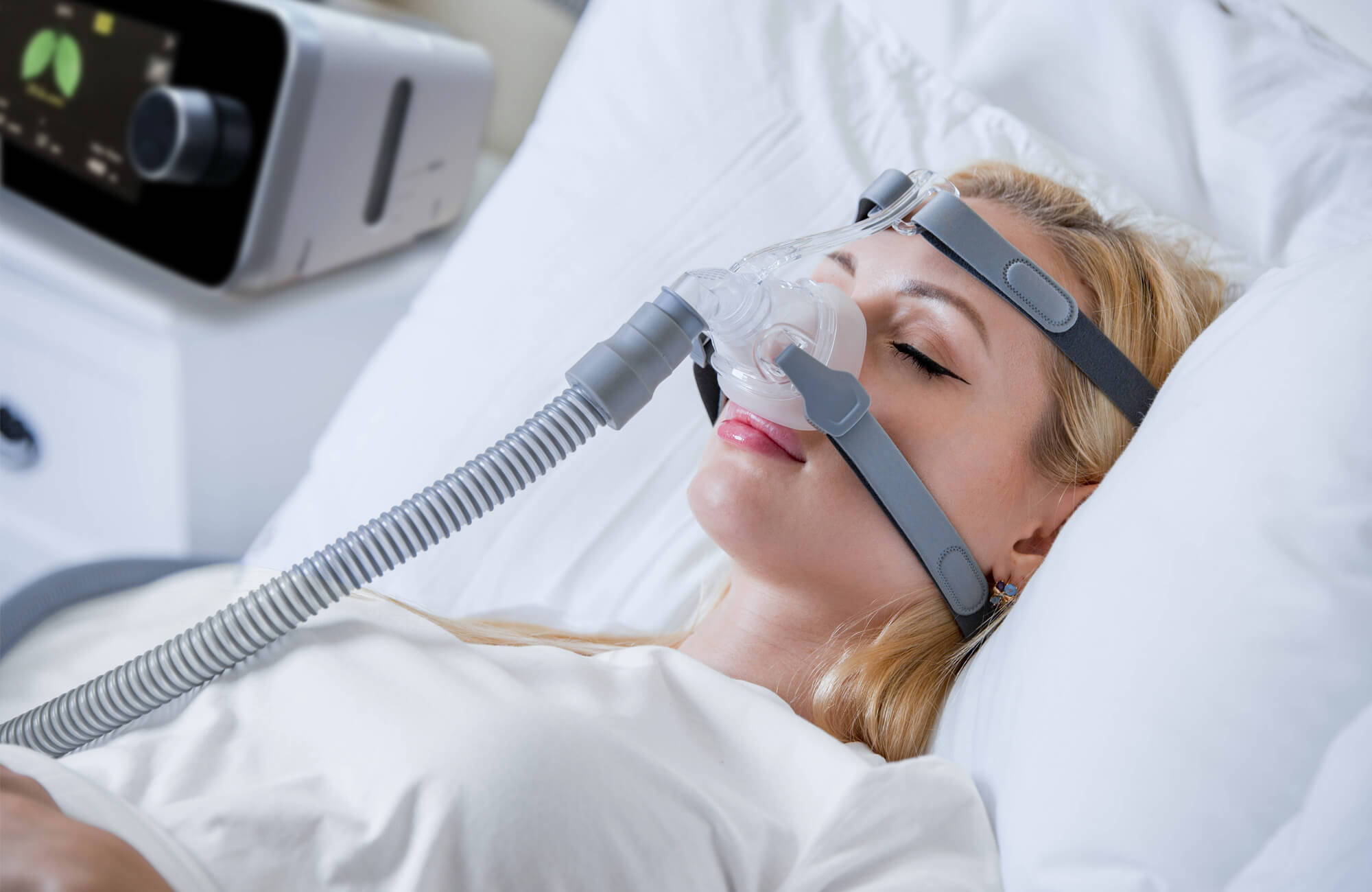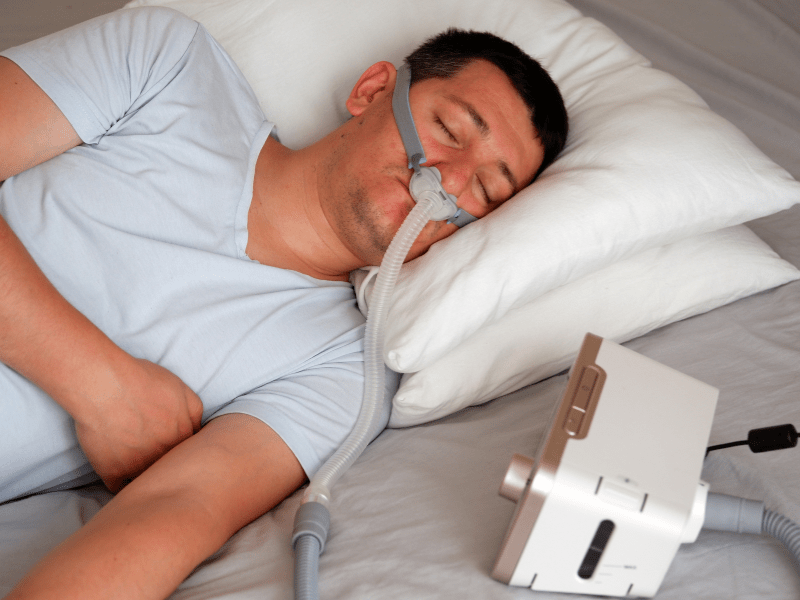Bipap vs. CPAP: Which Is the Best for Your Sleep Condition?
When browsing the intricacies of sleep conditions, the option in between BiPAP and CPAP treatment is an important factor to consider. Each method offers unique advantages customized to certain problems, yet the decision rests on specific person requirements and comfort levels. While CPAP gives a constant air flow ideal for obstructive sleep apnea, BiPAP's double stress setups might improve comfort for those with even more detailed respiratory concerns. Comprehending these distinctions can significantly influence therapy efficacy, leaving one to contemplate which choice really aligns with their wellness demands and lifestyle.
Comprehending Rest Disorders
Sleep problems include a series of problems that disrupt typical rest patterns, impacting both the quality and period of rest. These problems can materialize in numerous types, including sleep problems, sleep apnea, narcolepsy, troubled leg syndrome, and parasomnias. Each problem offers special difficulties, usually resulting in considerable daytime exhaustion, cognitive problems, and psychological disruptions.
Sleeplessness is characterized by trouble falling or staying asleep, while rest apnea includes duplicated interruptions in breathing throughout rest, often causing fragmented remainder. Narcolepsy, on the various other hand, is marked by too much daytime sleepiness and sudden sleep attacks. Uneasy leg disorder triggers uneasy experiences in the legs, motivating an uncontrollable desire to relocate them, which can additionally hinder the capacity to drop off to sleep.
The impact of sleep disorders prolongs beyond private wellness, affecting total performance, relationships, and lifestyle. Understanding the specific nature of each disorder is important for efficient medical diagnosis and therapy. As sleep health and wellness ends up being significantly identified as an essential part of total wellness, resolving these conditions is necessary for boosting both rest high quality and everyday functioning.
How CPAP Functions
Continual Favorable Air Passage Pressure (CPAP) therapy is regularly used as a main treatment for obstructive rest apnea (OSA) The device of CPAP entails the usage of a device that provides a consistent stream of air through a mask put on throughout sleep. This airflow keeps positive stress in the respiratory tract, protecting against the collapse or blockage of the throat that can happen during rest.
When a client takes in, the CPAP equipment supplies a continuous circulation of air, making sure that the air passage remains open - BiPAP Rental. This not only minimizes the symptoms of OSA, such as snoring and interfered with sleep patterns, yet likewise reduces the connected health and wellness threats, consisting of cardio issues and daytime fatigue
The stress settings on a CPAP equipment can be personalized to meet private patient requirements, typically identified via a sleep research. Individuals typically undertake titration studies to locate the ideal stress level for their one-of-a-kind problem. Regular follow-up and changes may be necessary to ensure performance and comfort. On the whole, CPAP treatment has been shown to substantially improve the quality of rest and general health for individuals experiencing obstructive sleep apnea.
Exactly How BiPAP Functions
BiPAP, or Bilevel Favorable Respiratory Tract Stress, is a specialized form of non-invasive ventilation that is particularly helpful for people with conditions such as complex sleep apnea or respiratory disorders. Unlike CPAP, which delivers a continuous stream of air at a single pressure, BiPAP offers two unique stress setups: a greater inspiratory stress for inhalation and a lower expiratory pressure for exhalation. This dual-pressure method permits much easier breathing, minimizing the initiative called for throughout exhalation.
The gadget operates through a mask fitted over the nose or mouth, connected to a machine that generates air pressure. When the client inhales, the maker delivers the higher pressure to aid with air movement, making certain that the respiratory tract remains open. Upon exhalation, the device immediately minimizes the stress, making it more comfortable for the patient to breathe out.

Key Differences Between BiPAP and CPAP

In comparison, BiPAP (Bilevel Favorable Air passage Stress) uses two different pressure setups: one for breathing and a reduced one for exhalation. This double stress system enables for more comfy breathing, specifically for individuals that struggle with exhaling versus a constant pressure. BiPAP is frequently suggested for people with complex sleep apnea, chronic obstructive lung condition (COPD), or those who require extra assistance throughout rest.
Moreover, the complexity of BiPAP tools generally leads to a greater expense and calls for extra careful titration than CPAP. BiPAP Rental. Understanding these essential differences can help in identifying which tool might be better for particular sleep conditions, establishing the foundation for enlightened treatment choices
Picking the Right Therapy
Exactly how can one establish the most appropriate therapy for taking care of rest disorders? The choice between BiPAP and CPAP treatment primarily depends upon the details characteristics of the rest problem, the individual's overall health and wellness, and their convenience with the gadget. CPAP, which delivers a continuous stream of air, is frequently suggested for obstructive his explanation sleep apnea (OSA) It maintains an open air passage throughout rest, efficiently avoiding apneas and hypopneas.
Conversely, BiPAP provides 2 levels of stress: one for inhalation and a lower one for exhalation. This twin pressure system is useful for clients with intricate sleep apnea or those that experience trouble breathing out against a continuous stress. Furthermore, BiPAP is commonly advised for people with breathing problems, such as chronic obstructive lung disease (COPD), where differing pressure settings can boost comfort and conformity.
Ultimately, a thorough examination by a sleep expert, including a sleep research study, can help figure out which treatment aligns finest with the client's demands. Elements such as convenience, ease of usage, and particular clinical conditions need to likewise be considered to maximize treatment results.
Verdict
In summary, both BiPAP and CPAP offer distinctive objectives in the monitoring of rest conditions. CPAP is efficient for obstructive sleep apnea with constant air movement, while BiPAP supplies twin stress setups that enhance comfort for those with complex sleep apnea or breathing concerns. The selection in between these treatments should be directed by private demands and problems, necessitating a thorough analysis by a sleep expert to make sure optimum therapy end results and boosted top quality of rest.

In general, CPAP treatment has been revealed to dramatically enhance the quality of rest and general health for people suffering from obstructive sleep apnea.
BiPAP is usually recommended for individuals with complex sleep apnea, chronic obstructive lung disease (COPD), or those who call for extra assistance throughout sleep.
CPAP is reliable for obstructive rest apnea through consistent airflow, while BiPAP supplies dual pressure settings that enhance comfort for those with complex sleep apnea or respiratory problems.
Comments on “BiPAP Rental: An Affordable Alternative to Acquiring”